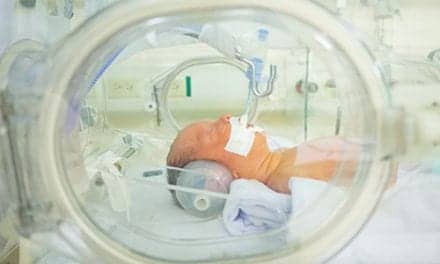RTs at Brigham and Women’s Hospital experience a wide variety of leading roles through advanced research and education.

At a time when the daily news trumpets the doom and gloom of downsizing, layoffs, and closing hospitals around the country, the Respiratory Care Department of Boston’s Brigham and Women’s Hospital continues to expand by adding equipment and personnel and offering new opportunities for RTs. “The opportunities here are unbelievable,” says Paul Nuccio, RRT, clinical educator for the Respiratory Care Department. “It seems like every time I speak to a physician, regardless of his or her specialty, they’re coming to us seeking our involvement.”
Founded in 1832 as the Boston Lying-In Hospital, Brigham and Women’s Hospital (BWH) has grown to a 716-bed facility and is consistently ranked as one of the nation’s top 10 hospitals by US News and World Report. A major teaching hospital for Harvard Medical School, BWH has been a pioneer in many medical procedures; it was the first hospital to successfully perform a human organ transplant, as well as the first to perform triple and quadruple organ transplants.
A COLLABORATIVE EFFORT
Under the medical direction of Elliot Israel, MD, and Eric Eichenwald, MD, the 60-member Respiratory Care Department staffs 10 intensive care units (ICUs), including a neonatal intensive care unit (NICU) and a new thoracic surgery ICU. Its primary involvement includes ventilator management in the more than 100 ICU beds where BWH’s RTs play a vital role in all aspects of patient care.
“Therapists here have an aggressive, hands-on role in ventilator management,” Nuccio explains. Therapists round daily with pulmonary consultants and surgeons to discuss ventilator management and to make recommendations for ventilator weaning. These collaborative weaning rounds are tailored to fit the needs of the particular ICU. For instance, surgical rounds take place at 5 pm when surgeons are more readily available. Therapists and the nursing staff have collaborated on care plans for weaning ventilator patients, with five different pathways including overnight weaning. The plan is reassessed every 24 hours during these weaning rounds by therapists, nurses, and physicians. This program puts ventilator management in the hands of each patient’s RT and RN.
Likewise, therapists in the NICU take a leadership role in managing ventilator patients. “In the NICU, we have an incredibly collaborative practice,” says Barbara Schultz, RRT, director of Respiratory Care. “The physicians look to our therapists for direction on ventilator management.”
Schultz came to BWH in December 1999, and assumed management of both the neonatal and adult respiratory care staff. Previously, the two departments had separate directors.

The 12 therapists working in the NICU are certified in a Neonatal Resuscitation Program (NRP); six are NRP instructors. Approximately 10,000 babies are born at BWH each year. Typically, 1,500 of those will pass through the NICU. The hospital’s NICU is the largest of seven in the city of Boston. According to Michael Jackson, RRT, perinatal/pediatric specialist and one of two clinical supervisors for neonatal intensive care, “In addition to providing support for ventilator babies, NICU RTs maintain an in-unit blood gas laboratory, provide noninvasive monitoring of patients, and provide other services such as inhaled nitric oxide and surfactant administration. RTs are also involved in all aspects of airway management.”
“Over the past 25 years, the respiratory therapy staff has gone from setting up ventilators at the bedside to managing every aspect of patient care,” says David Beadles, RRT, a clinical supervisor of neonatal intensive care. “It’s a very proactive department.”
Such intense involvement in patient care adds to job satisfaction for RTs at BWH. “One of the exciting things for me is the exposure to all types of hot-shot, whiz-kid physicians,” says Hank Read, RRT, a therapist at BWH for more than 30 years. “If I have an idea I wish to present, I can go to them with it and we can work together to make it happen.”
CUTTING EDGE PROCEDURES
In addition to the challenges of caring for patients each day, RTs at BWH have the opportunity to participate in cutting-edge procedures. Last year, BWH surgeons performed the world’s first quadruple organ transplant, in which a kidney, two lungs, and a heart were harvested from one donor and transplanted to four other patients. A team of 100 medical professionals, including RTs, made this groundbreaking procedure a success.
RTs play a vital role in the new thoracic surgery ICU, which opened last month. In addition to ventilator management, RTs will be caring for lung transplant patients post-surgery, ambulating ventilated patients two to three times a day. “Our model is to expand and enhance the level of involvement of our therapists,” Schultz says.
In the NICU, RTs attend all high-risk deliveries (less than 29 weeks’ gestation). They have participated in such high-profile cases as the separation of Siamese twins who shared one heart.

A transitional respiratory care ICU will open at BWH in October. This new ventilator unit is designed to transition chronic, stable ventilator patients from a traditional ICU setting into a uniquely designed step-down unit. “Therapists will play an active role in preparing the patient to become a better candidate for transfer into a rehabilitation facility or, in some cases, to return home on a ventilator,” Schultz explains.
Within the next few months, RTs will play an important role in transitioning care of adult cystic fibrosis (CF) patients from Children’s Hospital to BWH. New therapies and treatments have enabled CF patients to live into their 20s, 30s, and beyond. Their care, which has traditionally been part of pediatrics, must now address the challenges of treating adult CF patients. A respiratory care team at BWH is currently writing care plans to make this transition as smooth as possible for these patients.
RTs also benefit from the hospital administration’s commitment to improve technology in the department. Ten new ventilators were recently delivered and the remaining ventilator fleet is being upgraded with graphic screens and other options. New critical care portable ventilators are also being purchased for ambulation and transport.
Therapists like Read are excited about the introduction of new equipment. “As we receive the new machines and start using them, the entire ICU service will be enhanced,” Read predicts. “In this case, technology can drive therapy rather than therapy driving technology.”
EDUCATION AND RESEARCH
BWH therapists benefit from a variety of educational opportunities, both as students and as teachers. “I’m very proud of our extensive education program,” says Nuccio, who came to BWH less than a year ago to serve as the department’s first clinical educator. “The opportunity is here for RTs to obtain all the continuing education units (CEUs) they need to maintain their license at no cost.” In addition to regularly scheduled CEU programs, the department sponsors the biweekly Respiratory Care Journal Club, a forum to present and review articles published in the scientific literature. This helps therapists stay up-to-date within their areas of special interest.
Some therapists have the opportunity to be teachers as well as students, serving as instructors for clinical and classroom training for BWH nursing staff. The department also provides clinical training for students in respiratory care programs throughout eastern Massachusetts. Therapists at BWH help train medical students from Harvard Medical School as well.
Brigham and Women’s Hospital
|
“Because we are a teaching hospital, we have interns, residents, and neonatology fellows rotating throughout the unit,” Beadles says. “They look to us for support and guidance on how to manage babies on ventilators and they take our advice very seriously.”
Respiratory care at BWH, especially the NICU, provides a number of opportunities to participate in research. “Several research studies are ongoing in the NICU,” according to Jackson, “including a study of the use of aerosolized epinephrine in transient tachypnea of the newborn (TTN) and the use of inhaled nitric oxide in preterm infants to decrease the incidence of chronic lung disease.” One goal of the department is to offer more research opportunities in the future, especially in the adult ICUs.
Conclusion
Perhaps the wealth of opportunities available for RTs at BWH has contributed to job satisfaction and retention. “There has been very little turnover in our department,” Schultz says. “In that sense, there’s an increased team dynamic. For a large department, it has a community feel; it’s like a family.”
Low turnover also means a high level of clinical experience. The average clinical experience for therapists is more than 15 years. Rather than being bored by routine, RTs continue to find themselves challenged.
“The experience in our department is tremendous,” Nuccio says. “It’s exciting to see therapists rise to new challenges and their excitement and enthusiasm are contagious.”
BWH veteran Read agrees. “I am always looking for more and this is the place to be,” he says. “The care that patients receive here is very advanced and aggressive. This is a year of change in our department. As new people arrive and new ideas are presented, the opportunities for RTs at BWH are endless.”
Cynthia Myers is a contributing writer for RT Magazine.







